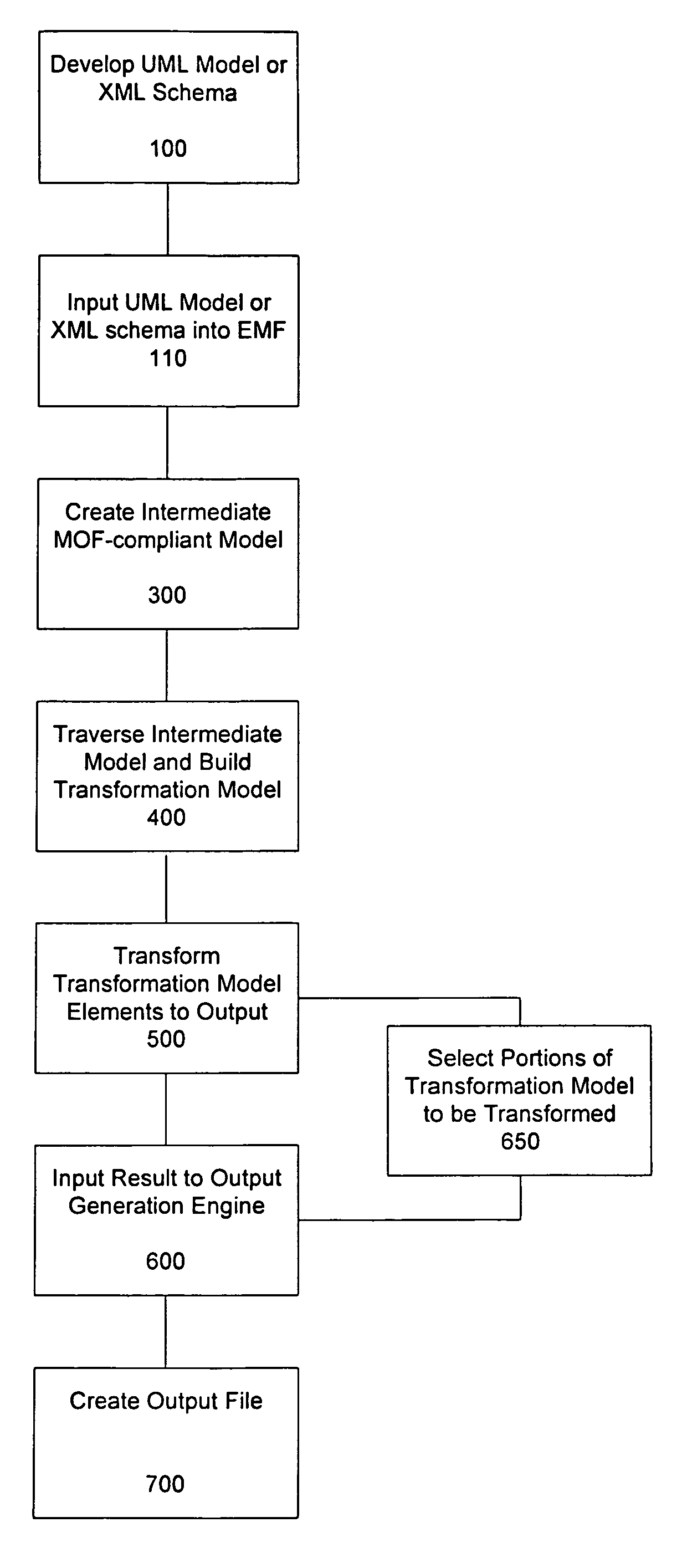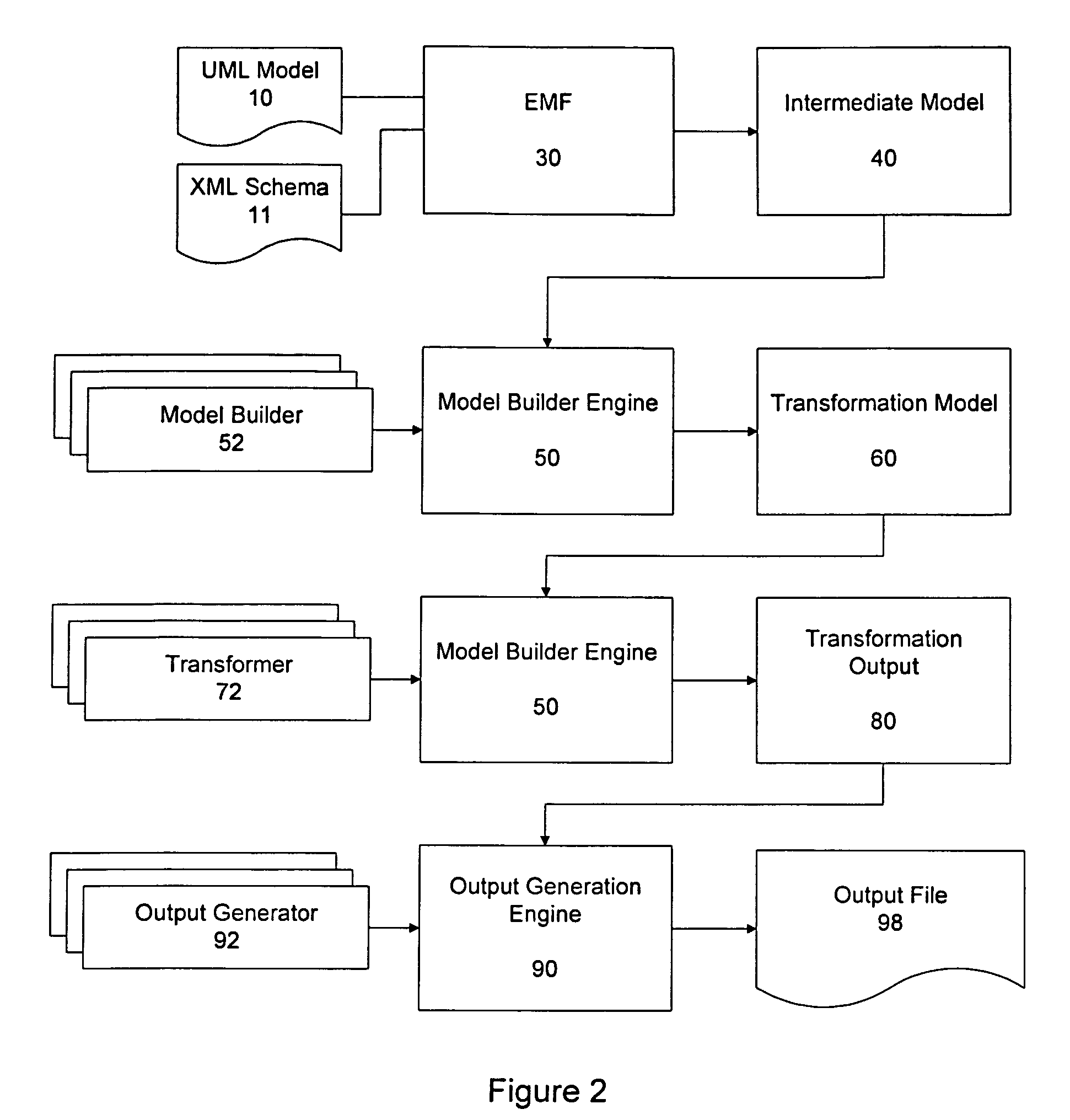System and method of model-driven development using a transformation model
- Summary
- Abstract
- Description
- Claims
- Application Information
AI Technical Summary
Benefits of technology
Problems solved by technology
Method used
Image
Examples
Embodiment Construction
[0029] Referring to FIG. 1, an overview flowchart showing a method for code generation from a platform-independent model is shown. A UML model or XML schema is developed 100, representing the processes to be implemented in a software application. For convenience, the description will refer to the UML model, although it will be understood by persons skilled in the art that the description applies likewise to XML schemas. The UML model is input into a meta-object facility (MOF) 110, which creates an intermediate model based on the UML model 300. At step 400, a model builder engine traverses the intermediate model created in step 300 to build a transformation model comprising zero or more model elements. The model elements are then transformed using a transformation engine and transformers to create transformation output 500, which may then be input to an output generation engine at step 600 to create an output file at step 700. Optionally, a user may at step 650 select which portions ...
PUM
 Login to View More
Login to View More Abstract
Description
Claims
Application Information
 Login to View More
Login to View More - Generate Ideas
- Intellectual Property
- Life Sciences
- Materials
- Tech Scout
- Unparalleled Data Quality
- Higher Quality Content
- 60% Fewer Hallucinations
Browse by: Latest US Patents, China's latest patents, Technical Efficacy Thesaurus, Application Domain, Technology Topic, Popular Technical Reports.
© 2025 PatSnap. All rights reserved.Legal|Privacy policy|Modern Slavery Act Transparency Statement|Sitemap|About US| Contact US: help@patsnap.com



